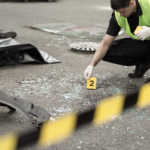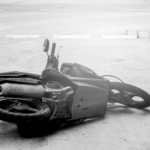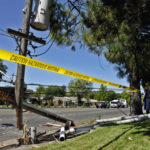What Conduct Amounts to ‘Dangerous Driving’ in New South Wales?

Police will allege speeding was a factor in the weekend’s horror bus crash in the Hunter Valley, which resulted in the deaths of 10 passengers and more than 20 being admitted to hospital.
The bus was carrying 36 passengers when it overturned just after 11.30pm on Sunday, 11 June 2023 at the third exit of the roundabout on Wine Country Drive near the Hunter Expressway off-ramp at Greta in the Hunter Valley.
It was returning the passengers, all of whom were adults, to their accommodation in Singleton after they had attended a wedding reception in Lovedale earlier that evening.
The 58-year old driver from Maitland, Brett Button, was formally charged with 10 counts of dangerous driving occasioning death, as well as driving furiously, recklessly, or in a manner or at a speed dangerous and negligent driving occasioning death.
He was refused bail at the police and will appear before Cessnock Local Court this morning.
The tragedy has shocked not only the Hunter Region but the entire nation, with New South Wales Premier Chris Minn calling it, “a profoundly tragic event” and noting that “the whole community of NSW, and in particular the people of the Hunter, will be shocked and saddened” by what occurred.
Many from the local Cessnock community and surrounding region are attending the courthouse this morning to follow the events.
What conduct amounts to dangerous driving in New South Wales?
Dangerous driving occasioning death and dangerous driving occasioning grievous bodily harm are offences contained in section 52A of the Crimes Act 1900 (NSW).
To establish either of the offences, the prosecution must prove beyond reasonable doubt that:
- You were the driver of a motor vehicle,
- You were involved in an impact causing the death of (in the cases of dangerous driving occasioning death), or grievous bodily harm to (in the case of dangerous driving occasioning GBH), another person, and
- You were under the influence of alcohol or a drug, or you were driving at a dangerous speed, or you were driving in a dangerous manner.
A ‘motor vehicle’ is defined as:
- Any motor car, motor carriage, motor cycle, or any other vehicle propelled, wholly or partly, by volatile spirit, steam, gas, oil, electricity, or by any other means other than human or animal power, or
- A horse-drawn vehicle.
An ‘impact’ is that which occurs:
- Between an object or a person and the vehicle,
- Between an object, including the ground, due to being thrown from the vehicle,
- With another vehicle or object in, on or near a person,
- With anything on or attached to the vehicle, or
- With anything in motion through falling from the vehicle.
It also includes where:
- A vehicle overturns or leaves the road, or
- A person falls or is thrown or ejected from the vehicle.
What conduct amounts to aggravated dangerous driving?
A more serious category the offence of dangerous driving is where the conduct occurred in ‘circumstances of aggravation’.
Such circumstances are where:
- You had a ‘prescribed concentration of alcohol’ in your bloodstream,
- You exceeded the speed limit by more than 45 km/h, or
- You were ‘very substantially impaired’ by a drug or drugs.
A ‘prescribed concentration of alcohol’ is a reading of at least 0.15.
You are presumed to have been under the influence of alcohol where you had the prescribed concentration of alcohol in your bloodstream.
A certificate of your alcohol or drug concentration is admissible as evidence as long as the analysis occurred within 2 hours after the impact, unless you are able to prove ‘on the balance of probabilities’ that the concentration was lower at the time impact.
What are the penalties for dangerous driving in New South Wales?
The maximum penalties that apply to dangerous driving offences in New South Wales are:
- Dangerous driving occasioning grievous bodily harm: 7 years in prison,
- Dangerous driving occasioning death: 10 years in prison,
- Aggravated dangerous driving occasioning grievous bodily harm: 11 years in prison, and
- Aggravated dangerous driving occasioning death: 14 years in prison.
How can I fight a dangerous driving charge?
It is important to be aware that a person cannot be found guilty of dangerous driving if the death or grievous bodily occasioned by the impact was not in any way attributable to:
- You being under the influence of alcohol or another drug, or
- The speed at which the vehicle was driven, or
- The manner in which the vehicle was driven.
This is known as a statutory defence that applies specifically to dangerous driving offences.
Other legal defences that apply to dangerous driving include:
- Automatism, including falling asleep behind the wheel(the Jiminez defence),
- Duress (essentially, being forced under a threat of imminent danger to drive in that way), and
- Necessity (driving in that way due an emergency situation, and such driving being justified in all of the circumstances).
Going to court over an allegation of dangerous driving?
If you are going to court for dangerous driving, call Sydney Criminal Lawyers anytime to arrange a free first consultation with an experienced, specialist traffic lawyer who will accurately advise you of your options, the best way forward, and fight for the optimal outcome in your case






